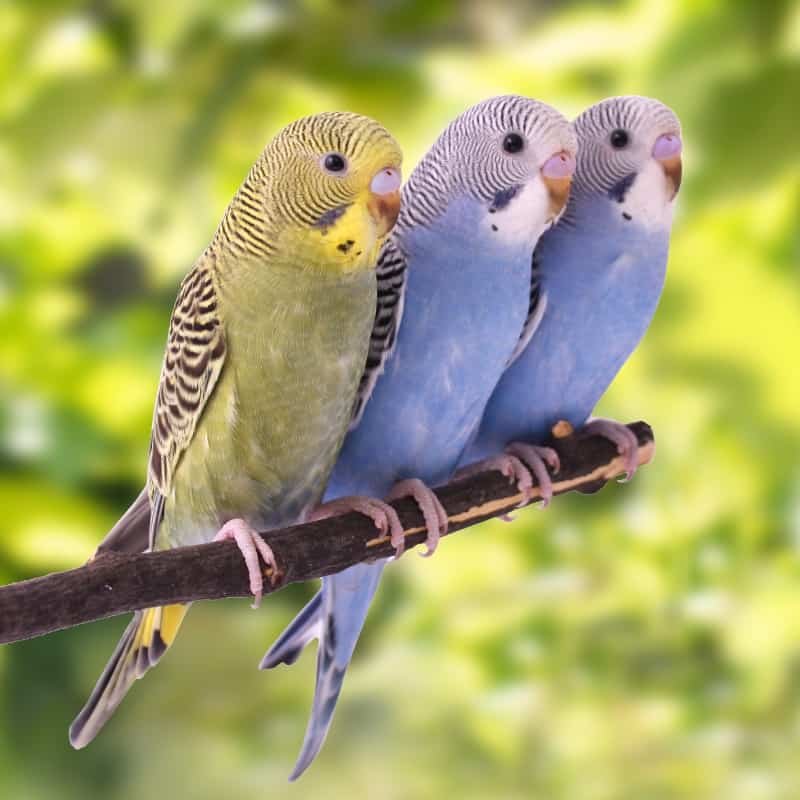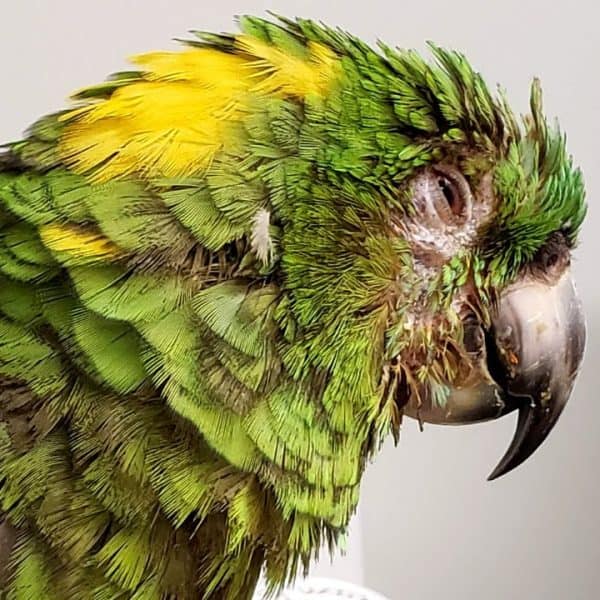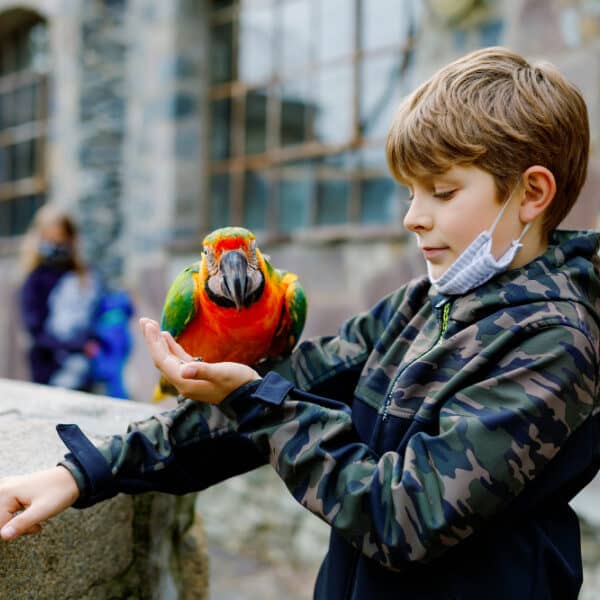Last Updated on by Catherine Tobsing
Parakeets make excellent avian companions for those venturing into the world of pet birds. Unlike all pets, it is crucial to take into account the lifespan of a parakeet before accommodating one into your feathered household. But first some housekeeping. You’re using the term “parakeet” fast and loose, aren’t you? Yep.For the purpose of this discussion, parakeets in this article refer to your basic budgie.Not Bourkes parakeets, Indian ringneck parakeets, just budgies – you get the picture. Think you know all the parakeet species there are? Think again. Budgies are not only charismatic and sociable creatures, but they also demand significant amounts of care and attention.
The budgerigar or budgie holds the title of the most widely seen parakeet in captivity. Within the confines of human care, these magnificent creatures have the potential to flourish for a period spanning from 7 to 15 years. Quite remarkably, this duration surpasses the lifespan of their wild counterparts nearly twofold. Out in their natural habitat, budgies face constant danger from predators, such as living beings with predatory instincts. Consequently, their lifespan in the wild ranges from 4 to 6 years.Duration of Parakeet Existence
Why do certain parakeets have a longer lifespan than their counterparts?
A parakeet’s lifespan can be greatly impacted by various elements. The provision of proper care and maintenance is crucial, as without it, their life expectancy can significantly diminish. A vital aspect to consider is nourishment. Various parakeet meal options exist, yet a well-rounded diet is imperative for ensuring your budgie’s ability to thrive fully. The health of parakeets plays a vital role in determining their life expectancy, as disease presence heavily influences it. Parakeets commonly encounter the following ailments:- Excessive body weight
- Roughed or hardened skin on legs or face due to mite infestation (Knemokotopes)
- Persistent laying of eggs over a long period
- Abnormal growths in the body
- Inbreeding
 The woman had paid $5.00 for her budgie.
The woman had paid $5.00 for her budgie.
The key to maintaining your budgie’s good health lies in taking preventive measures. Building a connection with a knowledgeable avian vet is vital to receiving the most effective advice and ensuring your budgie enjoys a satisfying existence. Given their talent for concealing illness, it is crucial to promptly consult your vet if you suspect any signs of sickness in your feathered friend. We dissolve daily multi-vitamins into all our bird’s water ~ we have 10 healthy birds.Maintaining Parakeet Health and Shield Against Illness
Contribute to the surveillance and prevention of widespread illnesses by ensuring your pet budgie benefits from:
- Ensuring that you adhere to a consistent schedule of annual veterinarian appointments.
- Perform an annual comprehensive analysis of blood and conduct microscopic examinations for parasites.
- Mandatory isolation period lasting at least 30 days for any new avian additions.
- Enhance your bird’s enclosure with stimulating toys and activities to study its behavior.
- Gradually accustom your parakeet to being handled, facilitating smoother transportation and veterinary encounters.
Parakeets, as granivorous creatures, solely consume grain and seed. Nevertheless, it should be noted that the diets of grain and seed in captivity contrast considerably with those in the untamed habitat. In the wild, parakeets frequently indulge in a variety of seeds, including grass seeds, chenopod seeds, and grain crops. Despite the wide availability of various seed diets for parakeets, a significant number do not furnish the essential protein, vitamins, and minerals necessary for these birds to lead prolonged and healthy lives. Parakeets are prone to various nutritional ailments if they are fed an unbalanced diet. Several seed-based diets lack sufficient levels of calcium and vitamin A. To avert these ailments, it is advisable to provide them with a well-balanced pelleted diet. Seeds and millet, on the other hand, can be utilized as a means of behavioral enrichment to encourage grazing behaviors.Feeding Habits of Parakeets
To ensure optimal conditions for parakeets, it is crucial to grant them an extensive living environment. The cage should not be smaller than 18 inches in width and length, serving as a minimum requirement for their well-being. For parakeets, the emphasis lies in acquiring a cage that offers considerable floor space as it plays a significant role in promoting their natural behaviors, such as foraging. Moreover, to meet their needs, the distance between the cage bars should be around 3/8 inches.Suggested Habitats for Parakeets
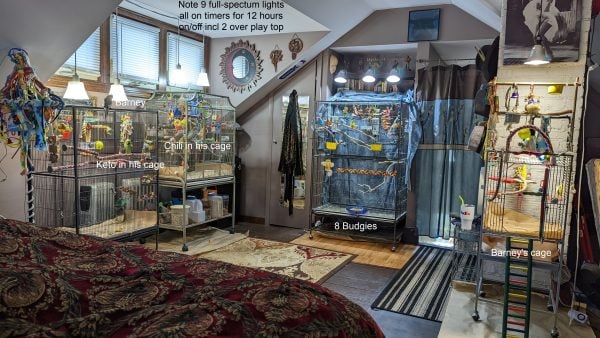 To replicate the natural surroundings of parakeets, it is recommended to provide them with a variety of perches of varying sizes and orientations.
The diameter of the perches should range from 3/8 to 3/4 inches.
These perches can be fashioned out of different materials that are either soft or smooth.
However, it is crucial to examine each perch for any abrasive qualities before placing them in the cage, as they have the potential to cause foot injuries.
To replicate the natural surroundings of parakeets, it is recommended to provide them with a variety of perches of varying sizes and orientations.
The diameter of the perches should range from 3/8 to 3/4 inches.
These perches can be fashioned out of different materials that are either soft or smooth.
However, it is crucial to examine each perch for any abrasive qualities before placing them in the cage, as they have the potential to cause foot injuries.
Seeking advice from a vet regarding your budgie’s well-being is vital to enhance its overall health and contentment, ultimately elongating its lifespan. Numerous strategies exist to support the care of your parakeet, with professional guidance being key. Some common measures might encompass: Sufficiently care for one or more parakeets by:Tips for Enhancing Your Parakeet’s Longevity
- Ensuring their nutritional needs are fully met every day
- Allowing them unrestricted access to water
- Providing ample opportunities for social interaction
- Engaging them in active foraging activities specific to their species
- Supplying mineral blocks, cuttlebones, and wood blocks to assist in the maintenance of their beak
- Staying up-to-date with yearly veterinary check-ups and establishing an early relationship with a bird-experienced veterinarian
- Consulting your veterinarian regarding routine blood testing and screening for parasites
- Exercising caution by quarantining any newly introduced pet birds within your home for a minimum of 30 days.
Author Profile
Latest entries
 Bird & Parrot AnatomyApril 29, 2025Why Underestimating Parrots’ Intelligence Has Been a Mistake
Bird & Parrot AnatomyApril 29, 2025Why Underestimating Parrots’ Intelligence Has Been a Mistake Bird & Parrot CareApril 29, 2025If Your Pet Bird Doesn’t Have a Neocortex How Come Its So Smart?
Bird & Parrot CareApril 29, 2025If Your Pet Bird Doesn’t Have a Neocortex How Come Its So Smart?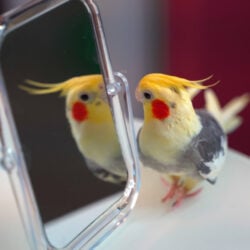 African greyApril 28, 2025What Happens When Scientists Peer Inside Your Pet Birds Head?
African greyApril 28, 2025What Happens When Scientists Peer Inside Your Pet Birds Head? Bathing and HealthApril 25, 2025What One Ingredient Might Your Pet Bird Be Missing?
Bathing and HealthApril 25, 2025What One Ingredient Might Your Pet Bird Be Missing?
